Text and Photos by Henrylito D. Tacio
If only we are not experiencing pandemic these days, these festivities would have been observed and practiced in various parts of the country. Perhaps, when everything is back to normal, then we could again witness these grand festivals:
After the boom and crack of New Year’s Day, the Philippines then stages a barrage of frenzied festivals and celebrations. In the province of Cebu, Iloilo, and Aklan, the New Year’s Eve revelry that kicked off at midnight carries over until the third week of January in a series of Mardi grass-like festivities – the Sinulog in Cebu, the Ati-Atihan in Aklan, and the Dinagyang in Iloilo.
Cebu City’s fiesta of fiestas, Sinulog, is a century-old tradition whose prayer-dance is harmonized to the beat of drums and shouts of “Pit Señor! Viva Sto. Niño!” The Ati-atihan is a celebration in honor of the Sto. Niño with revelers don colorful costumes and paint their bodies black, and dance to the distinctive beat of “Hala bira!” around the town.
Dinagyang Festival is a spectacular event in the province of Iloilo where people in unique costumes dance all day and night to commemorate the Christianization of the natives and also to honor the Holy Child Jesus.
Baguio City comes alive during the whole month of February when everyone celebrates the Penagbenga Festival, a popular tourist attraction that showcases the grand parade of flowers and rich cultural traditions in the city. This celebration is marked with elaborate floral designs, street dancing, grand fireworks display, and other weekly activities that include local art shows and beauty pageants.
In Marinduque, the annual observance during the Lenten Season is marked by the folk-religious festival of Moriones, which has become a foremost tourist attraction of the province. The festival relives the miraculous restoration of Longinus’ (a Roman centurion who speared the crucified Christ) sight through a dramatic play. For an entire week, religious devotees parade on Boac, Gasan, and Torrijos’s streets with their intricately designed Moriones costumes of painted masks, helmets, and tunics.
The month of May has two famous festivals: the Pilillan Carabao on the 14th in Bulacan and Pahiyas on the 15th in Sariaya, Lucban, and Tayabas, Quezon. The highlight of the Pahiyas is a procession along the streets where all houses are decorated with agricultural harvest (such as fruits, vegetables, rice grains, rice stalks, beautiful flowers, and ferns) and with native “pahiyas” (decor) called “kiping,” a wafer of rice with various colors.
A roast pork festival may sound kind of strange, but during the Parada ng Lechon in Balayan, Batangas, every June 24, fancy-dress porkies are paraded around the town before the animals are roasted, and everyone sits down to eat. The festival coincides with the feast of John the Baptist, the patron saint of the city.
Mindanao is the second-largest island of the Philippines. It is the most culturally diverse island in the country where people of different languages, tribes, and races meet. As a melting pot of different cultures, it creates a more distinct culture that is not present in other island groups in the country. It’s no wonder the festivities of each province, cities, and towns differ from each other. Here are some of the most colorful ones:
Kadayawan, which started in 1988, is touted to be Mindanao’s festival of all festivals. It honors Davao’s artistic, cultural, and historical heritage, its past personified by the ancestral “lumads” (natives), its people as they celebrate on the streets, and its floral industry as its representatives’ parade in full regalia in thanksgiving for the blessings granted on the city.

Kadayawan’s floral float 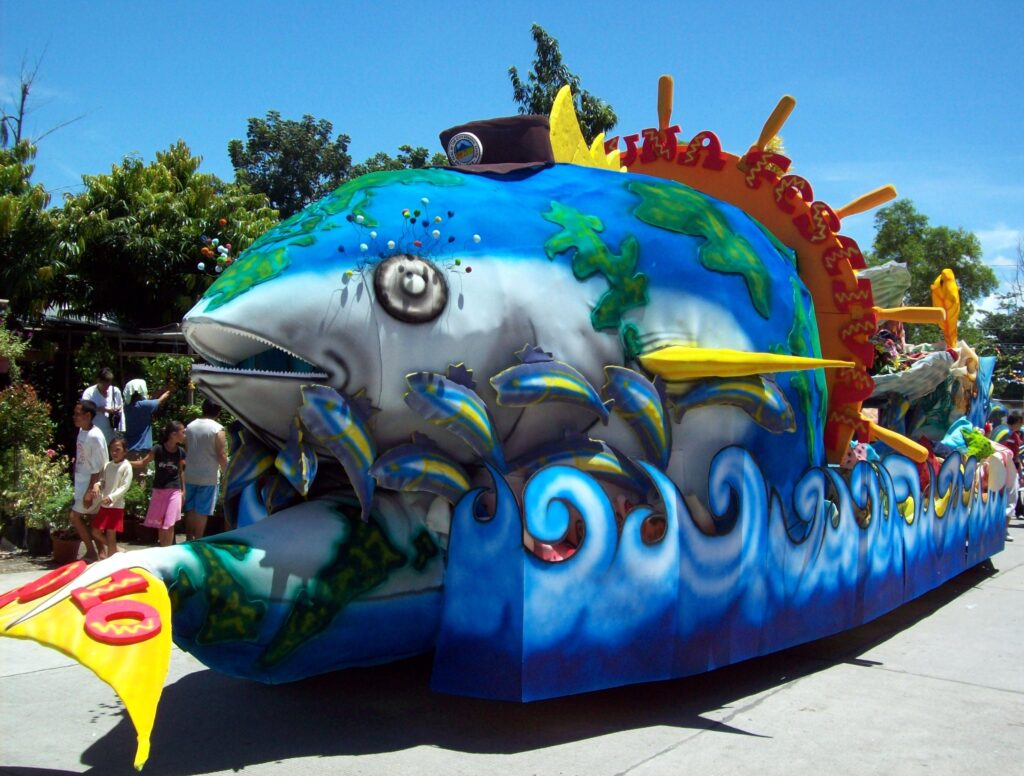
Tuna Festival Float 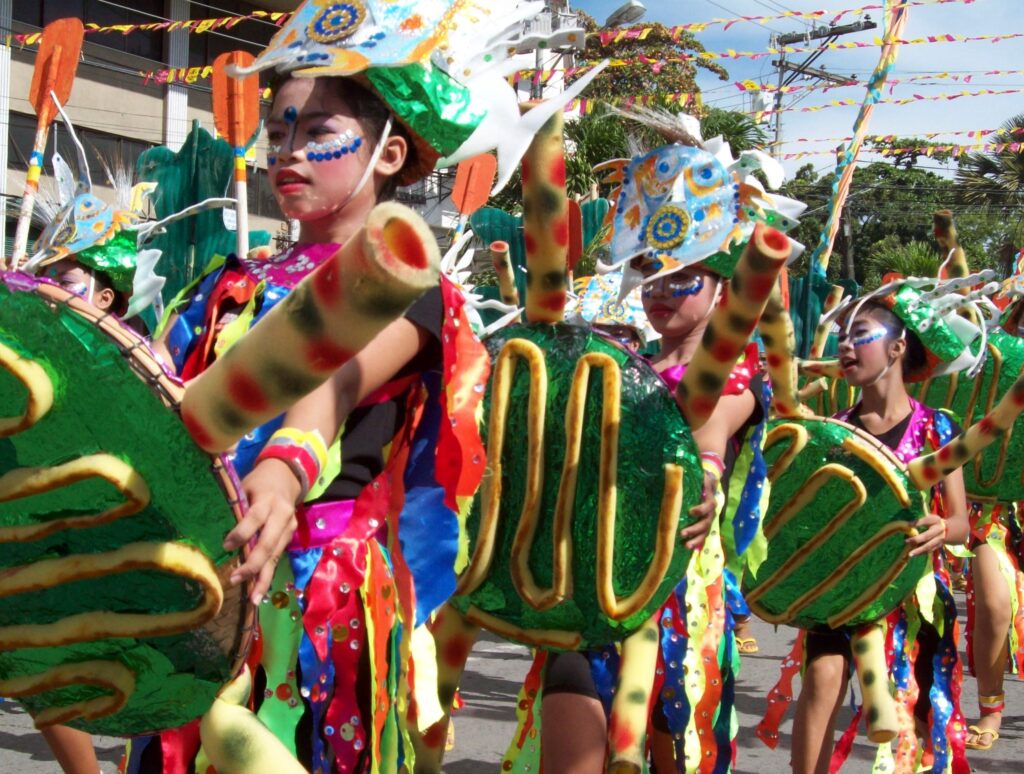
Tuna Festival
General Santos City in South Cotabato has to pay proper homage to the city’s number one industry through the Tuna Festival. The week-long celebration features different events and activities focusing on the tuna industry of the province.
Mati, the lone city of Davao Oriental, is known for Sambuokan, which is celebrated every October. Sambuokan literally comes from a Mandaya word “buok,” which means “in one” or “united.” It is a way for the people of Mati to celebrate the bounty of what God has given to them and the city’s progress.
In July, Koronadal City in South Cotabato comes alive with the Tinalak Festival celebration, named after a woven cloth popularized by the province’s T’boli tribe.
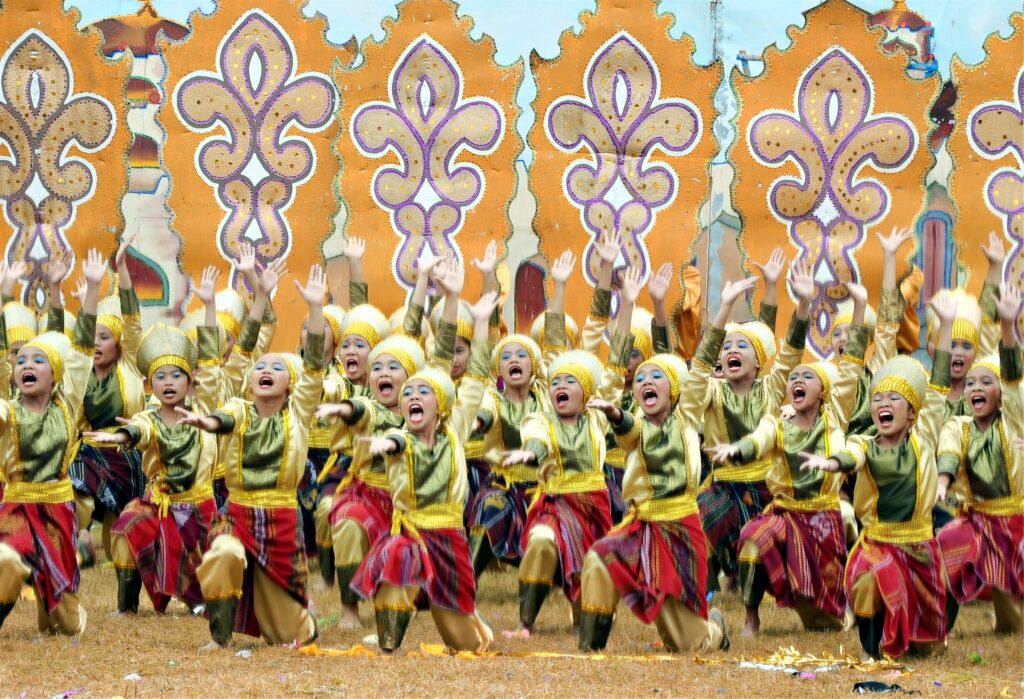
Tinalak Festival 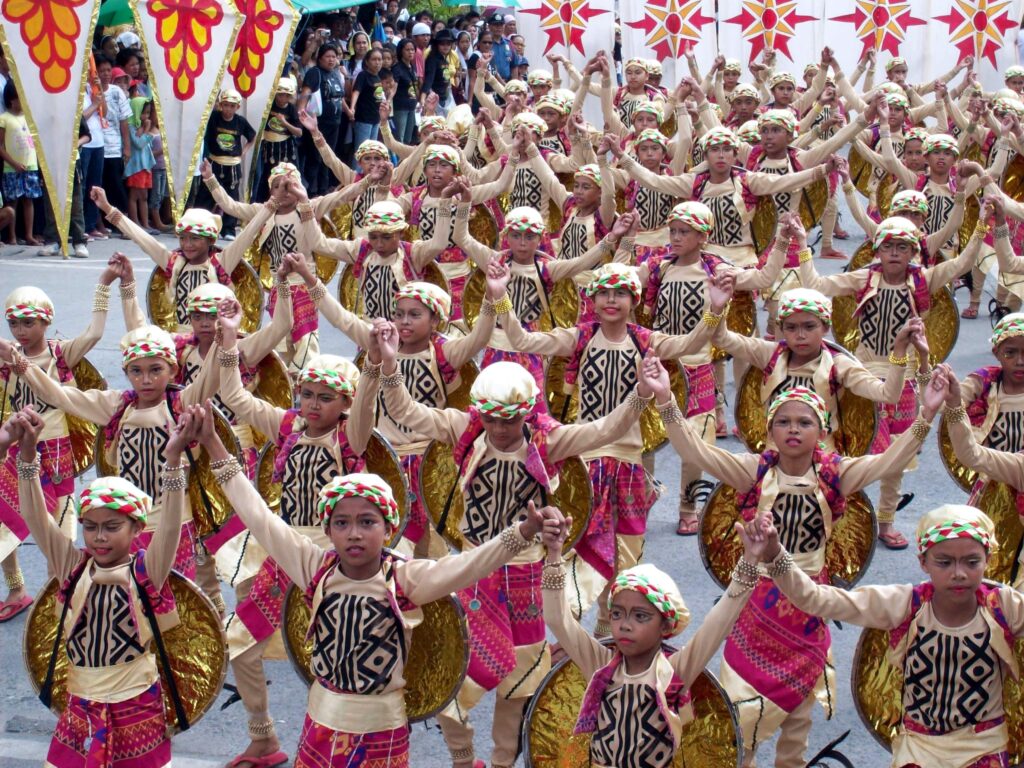
Sambuokan Festival of Mati
The province of Bukidnon has come up with Kaamulan, which comes from the Binukid word “amul,” which means to gather. It is a gathering of Bukidnon tribes for a purpose such as “Datuship,” a ritual, a wedding ceremony, a thanksgiving festival during harvest time, a peace pact, or all of these put together.
Zamboanga City is known for its Zamboanga Hermosa Festival. With a difference, this regatta sees the native boats called “vintas” in races, alongside a whole host of land-based activities in veneration of Nuestra Señora Virgen del Pilar.
Even small towns in Mindanao have their own festival. On the town’s anniversary, September 18, the sleepy Bansalan of Davao del Sur keeps itself awake as it celebrates Bansaulog Festival, the municipality’s anniversary. It comes from two words: “bansa” (from the name of the town) and “saulog” (which means “celebration” in local dialect).
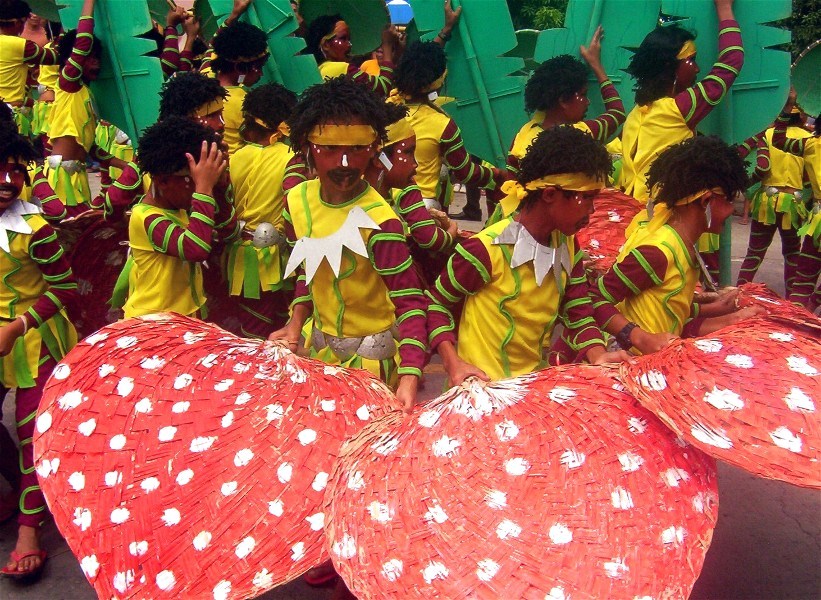
Even during the Christmas season, Filipinos still have a way of observing certain festivals. From a lamp-lit procession, the annual celebration of the Lantern Festival in San Fernando, Pampanga has become a major attraction during the Christmas season. A stunning display of lights and color happens during the festival night of lanterns in San Fernando as the designers of each “parols” (lanterns) compete for the biggest and most dynamic interplay of each creation during the five-minute show.
All these festivities end with the Binirayan Festival, which is celebrated in San Jose, Antique, from December 28-30. It is a festive commemoration of an episode in the history of the Filipino race through colorful pageants acted on the beaches of Maybato in San Jose and Malandog in Hamtik. The festival is also an occasion of reunion with families, relatives, and friends of homecoming Antiqueno expatriates.
Indeed, it’s more fun in the Philippines – with all these festivals throughout the year!

